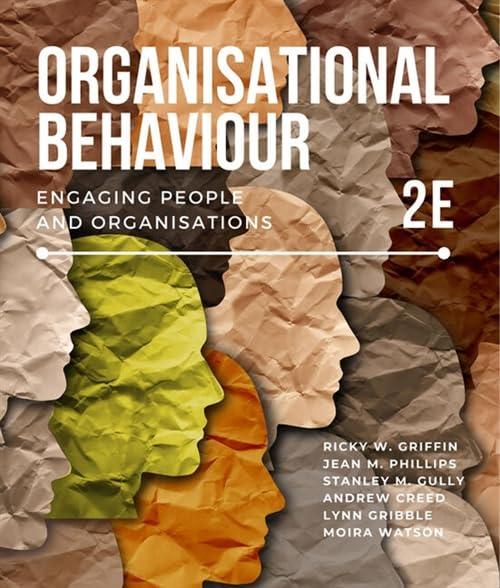Jaimin was concerned. He had talked with his teammate, Alex, about the fake First Nations Australian souvenirs
Question:
Jaimin was concerned. He had talked with his teammate, Alex, about the fake First Nations Australian souvenirs being passed off in their store as genuine First Nations Australian art when they were actually made in Indonesia. Alex’s response had been, ‘Don’t worry. Everybody does it. Look, you’re new here and don’t understand how we do things. If you make a fuss you’ll cause trouble for the owners and then we could all lose our jobs. We’re on a good thing here, don’t rock the boat’. Jaimin didn’t know what to do; he liked working with his team, found the work interesting and wanted to continue to have a job. He’d heard how the team leader, Kundra, had terminated someone else who had previously asked questions about the fake art and Jaimin didn’t want to be in trouble. On the other hand, he thought it was deceptive to pass off mass-produced products made offshore as authentic First Nations Australian, handmade products. Having previously worked in the local Aboriginal art centre, Jaimin knew that the dot-painted plates, boomerangs and didgeridoos told stories about aspects of culture and relationships with water, land, animals and other people. Some of these images were culturally sensitive and he knew that many First Nations Australians felt their traditions were being disrespected when these motifs appeared incorrectly. There was also the issue of recompense for the intellectual property of the thousands of years that had influenced these designs and for any copyright issues. Jaimin didn’t support ‘cultural appropriation’, where First Nations Australian artwork and symbolism is used, without permission or consultation from First Nations Australians, for profit making that benefits non-First Nations Australian companies,62 and he didn’t believe consumers should be deceived. He sought some advice from one of his university teachers, Nellie, who said he had some choices.
1. avoid thinking about it
2. conform with the team norms
3. protest
4. conscientiously object
5. leave the job
6. secretly leak the information outside the organisation
7. publicly blow the whistle
8. anonymously threaten to blow the whistle
9. obstruct
10. work with the team to build consensus to stop selling the products.
Questions:
Jaimin was in a dilemma. Should he follow his own conscience and defy his team or act in line with the team norms? Should he reveal what was happening, or did he have the courage to accept any consequences with a hope that he might eventually change the team’s actions? Which of the suggested 10 choices would you take in Jaimin’s position, and why?
Step by Step Answer:

Organisational Behaviour Engaging People And Organisations
ISBN: 272389
2nd Edition
Authors: Ricky W. Griffin, Jean M. Phillips, Stanley M. Gully, Andrew Creed, Lynn Gribble, Moira Watson





